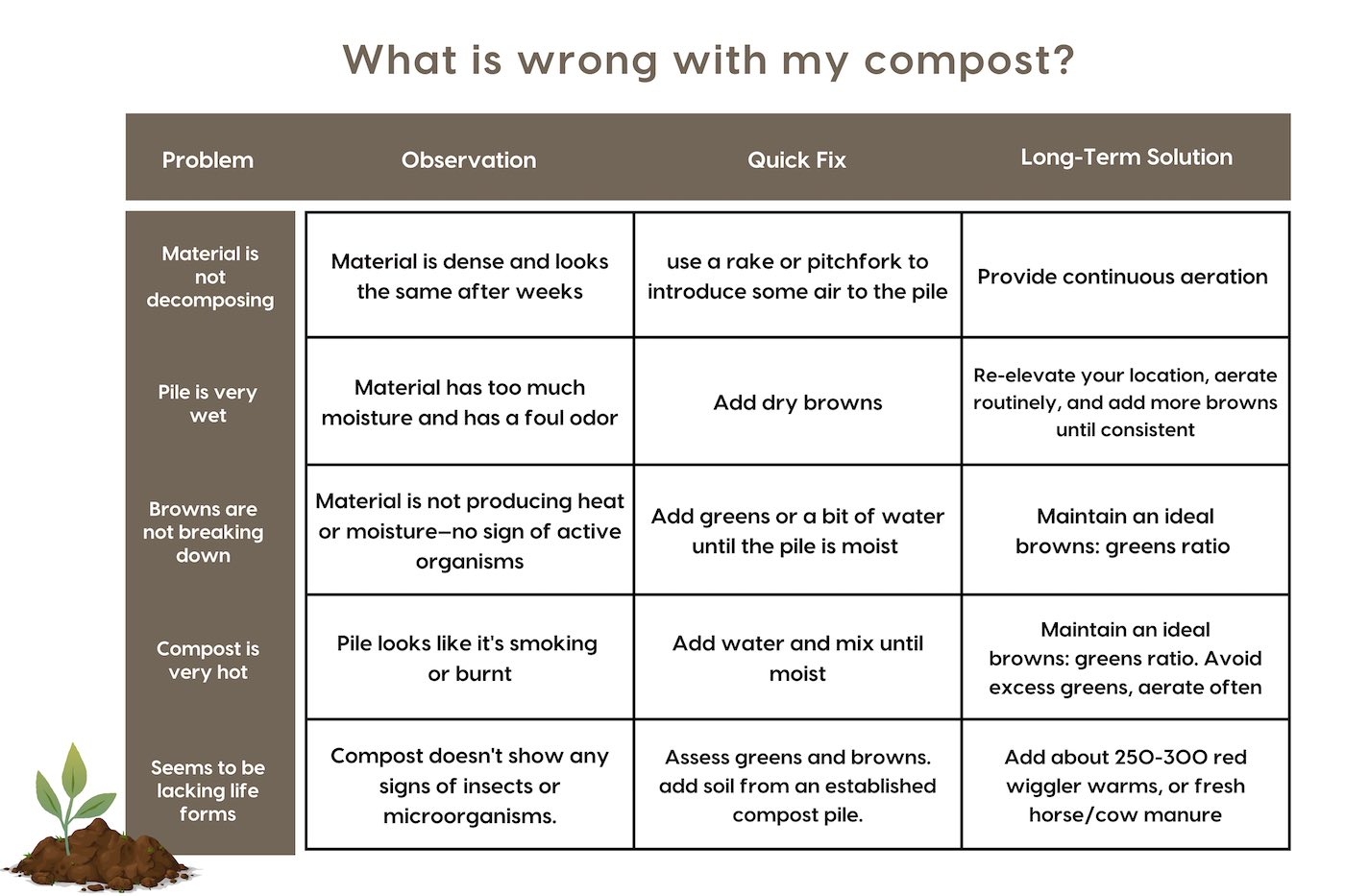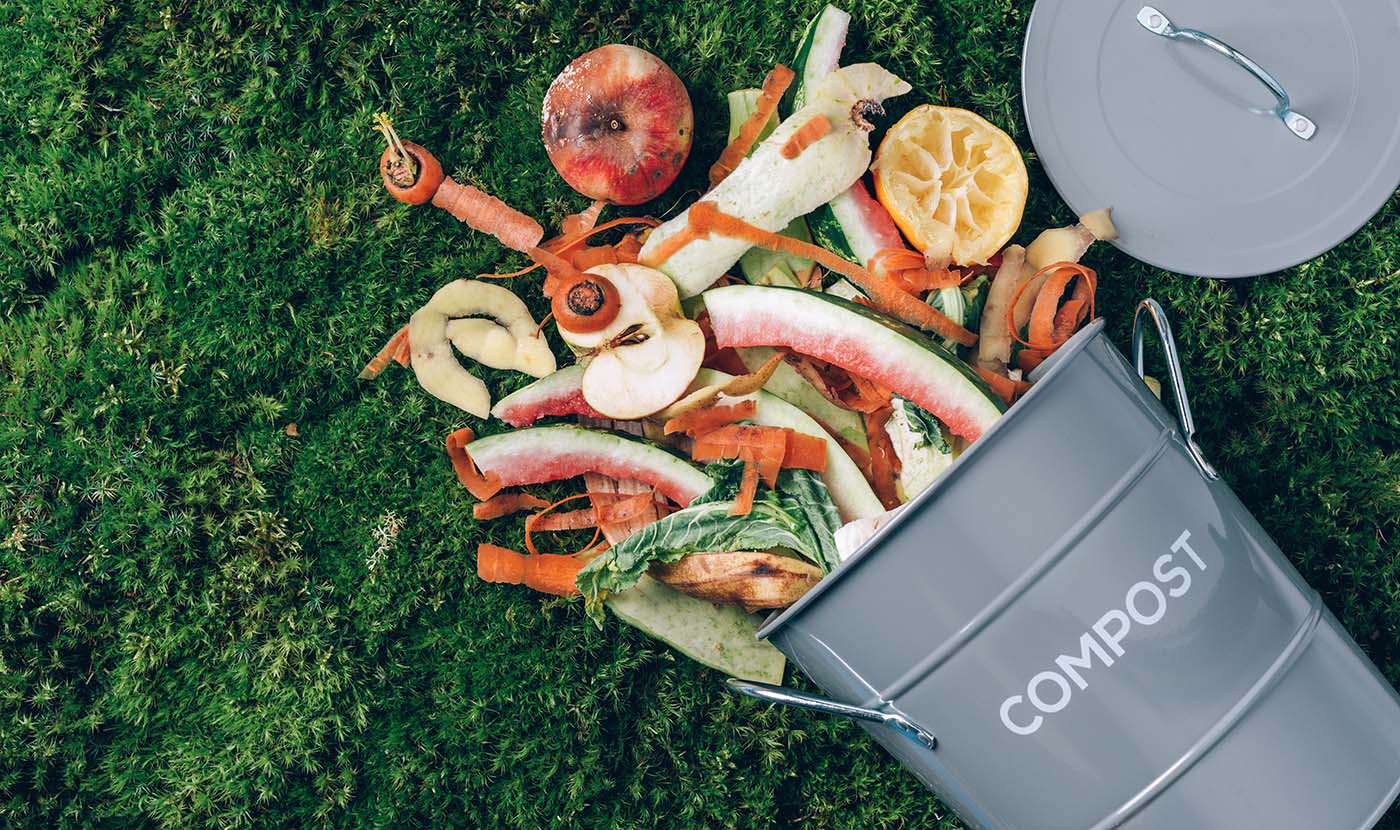
Now that you have learned how to compost like a genius, it’s time to get ‘down to earth’!
“It’s best to have your tools with you. If you don’t, you’re apt to find something you didn’t expect and get discouraged.” – Stephen King
Having the right tools can make composting that much more enjoyable. Composting can look different for everyone. The process can vary depending on where you live; composting in a city apartment will be quite different than composting on a farm property. Either way, it’s usually doable.
Industrial Composting
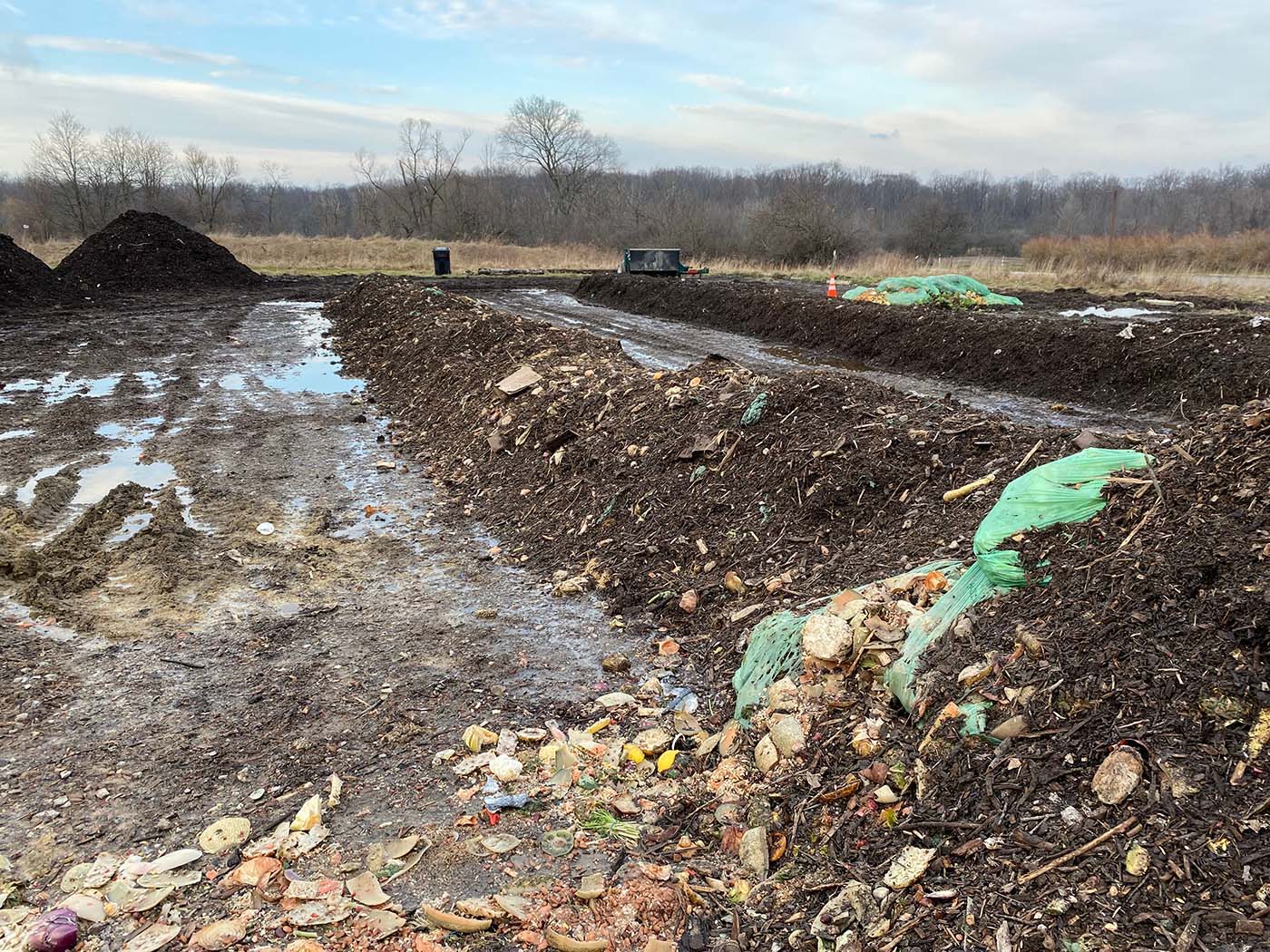
- In-vessel: Refers to a drum or silo filled with any organic waste, food scraps, biosolids, or compostable-certified plastics. This method produces minimal odours and allows for optimal temperature, moisture, and airflow control.
- Windrows: Organic matter / waste is placed into long rows of waste and is then aerated mechanically. This method improves oxygen content and level of porosity. It also improves the ability to retain water, mix in or remove excess moisture, and evens out the temperature of the pile.
- Aerated static pile: piles of food waste and paper scraps are layered with paper or wood chips to allow airflow while a network of pipes moves air through each pile. Since there is no manual aeration, such as turning, this type of composting needs to be carefully monitored.
Backyard Composting
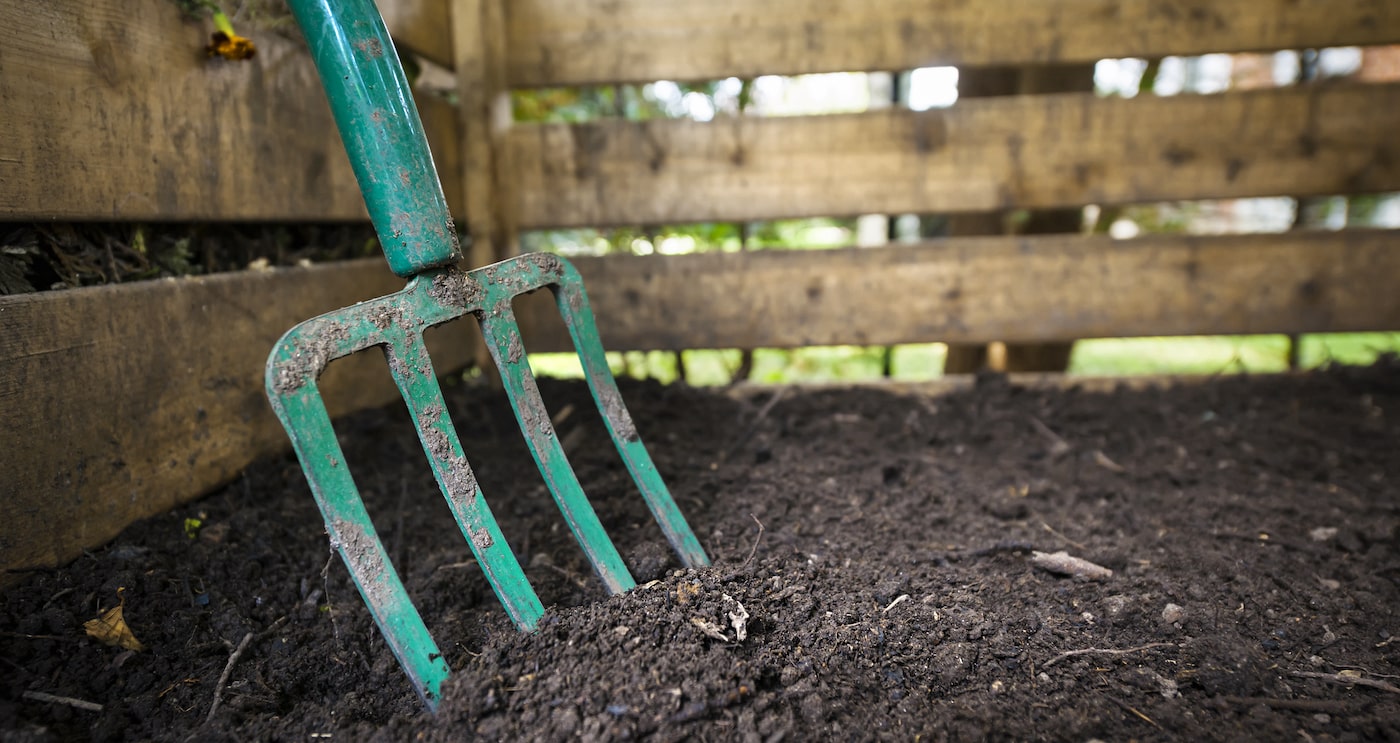
Here’s what you can do:
- Find the perfect location for your compost pile. Once you choose your location, you will not want to change it, so choose wisely.
- Use chicken wire or welded wire to set a perimeter around your pile (this will keep your pile contained while providing aeration, and keeping rodents out)
- Start your pile on bare earth.
- Lay 4 inches of browns down on the earth. This will help with drainage and aeration.
- Start adding food scraps, alternating between greens and browns. Remember that browns break down much slower than greens.
- OPTIONAL – add manure.
- Cover with a layer of browns.
- Turn the pile with a shovel or pitchfork every few weeks. AERATION IS KEY.
Indoor Composting
If you live in a condo or an apartment, if your lawn space is not ideal for composting, or if you’re just looking for ways to manage food waste, then indoor composting checks all the boxes. Since you can store a compost bin in almost any dry space indoors (Such as a corner in the kitchen, under the sink, or on the counter), repurposing food scraps can be easy. The greatest advantage of indoor composting is the consistent warm temperature – you don’t have the struggle of fighting cold weather, rain, or extreme heat, all of which can have adverse effects on your pile.
There are 2 main ways to start composting indoors, aerobic composting and vermicomposting:
AEROBIC COMPOSTING:
Aerobic composting uses our microbial friends found in garden soil to convert food waste and other organic material into compost. If you don’t have a garden, your homemade compost can be used to fertilize houseplants, lawns, bushes, flowers; or shared with a neighbour or friend with a garden… trade compost for cucumbers?
How it works: While microorganisms break down the matter, they release nitrogen, phosphorus, and potassium to create a rich compost. A crucial step, as the name of this process suggests, is supplying continuous aeration to the bin. Once a week, turn the contents of your bin over with a wooden spoon to introduce oxygen to the mix. The entire process can take anywhere from two to four months until your compost is ready to use. When your compost is ready to make it’s way into the world, it’s time to start the process all over again. And now that you’re a natural, it’s totally normal to be excited about composting.
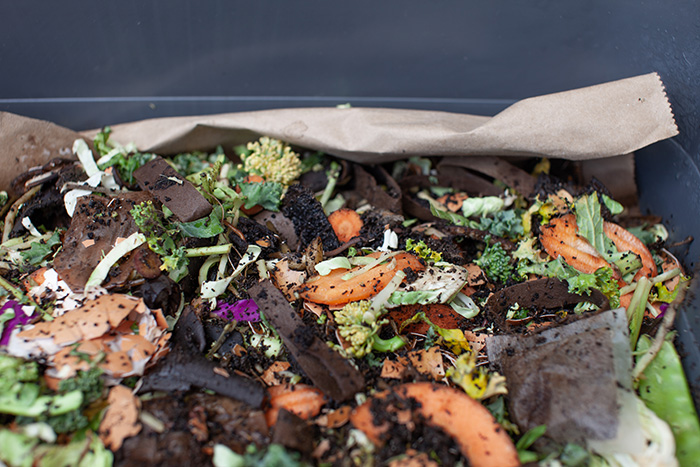
- 5 to 6-gallon bucket with a plastic lid
- Drill and large drill bit. OPTIONAL: Screen material, small enough to keep fruit flies out. Shredded newspaper or cardboard.
- Garden soil
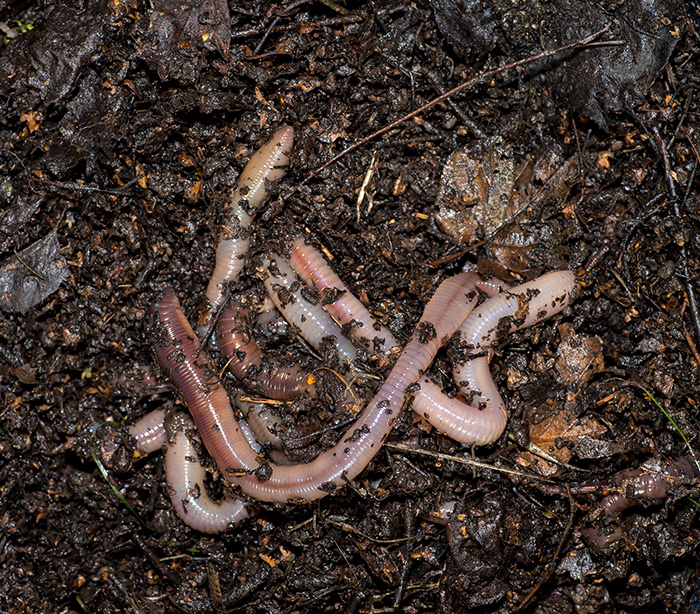
- Drill with 3/16- and 1/8-inch drill bits
- 3 plastic buckets (5-gallon size is best)
- 1 bucket lid
- Garden soil
- Shredded newspaper or cardboard
- 250 to 500 red wiggler* composting worms
Compost vs Fertilizer
Maybe you’re at that point where the F-word starts to creep into your mind, so let’s talk about it: Fertilizer. What’s the benefit of composting over just using store-bought fertilizer?
- Although fertilizer can be beneficial for treating specific soil nutrient deficiencies, it does not provide the same flow of nutrients as compost. Fertilizer can overload soil with nutrients instead of the consistent, gradual stream that comes from your powerful compost.
- Some chemicals found in fertilizer can ruin soil’s symbiotic relationship with microbes… and you don’t want to be a homewrecker.
- Overuse of fertilizer can cause the chemicals found in it to harm the surrounding environment, and they can also work their way into nearby bodies of water.
- An added cost to growing your garden, rather than the scraps you already have from your kitchen
How can I tell if my compost has gone wrong?
